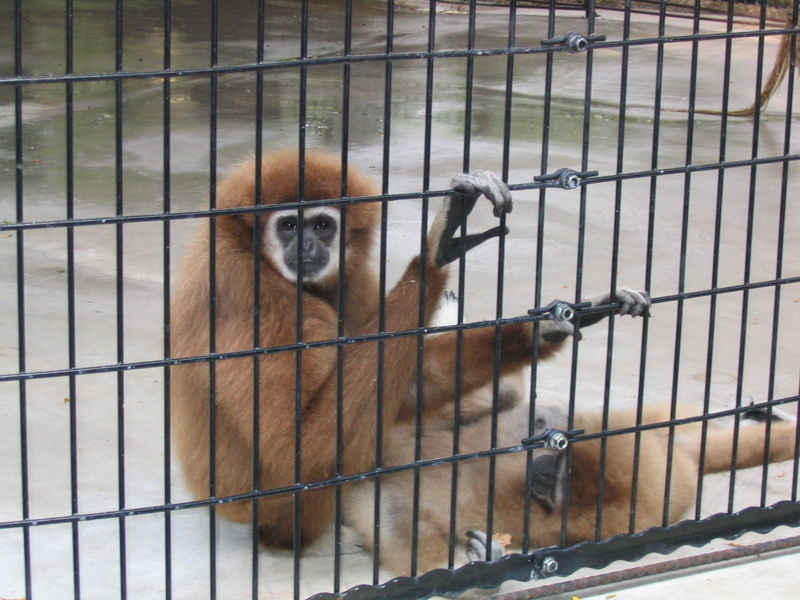ERROR : Server Busy(-1105)
ERROR : Server Busy(-1105)
Lar Gibbon/White-handed Gibbon (Hylobates lar) - Wiki
White-handed Gibbon, Hylobates (Hylobates) lar
* Location: Henry Vilas Zoo in Madison, Wisconsin taken in Summer 04.
* Source: Dori
* License: Dual GFDL CC
Lar Gibbon
From Wikipedia, the free encyclopedia
The Lar Gibbon (Hylobates lar), also known as the White-handed Gibbon, is a primate in the Hylobatidae or gibbon family. It is one of the more well-known gibbons and is often seen in zoos.
The range of the Lar Gibbon extends from southwest China and eastern Myanmar to Thailand and down the whole Malay Peninsula. It is also present in the northwest portion of the island of Sumatra.
The skin coloring of the Lar Gibbon varies from black and dark-brown to light brown sandy colors. The hands and feet are white colored, likewise a ring of white hair surrounds the black face. Both males and females can have all color variants, and the sexes also hardly differ in size. As is the case for all gibbons, they have long hands and no tail.
Lar Gibbons are diurnal and arboreal, inhabiting rain forests. They rarely come on ground, but they use their long arms to brachiate through the trees. With their hooked hands they can move swiftly with great momentum, swinging from the branches. Lar Gibbons live monogamously, mating for life. The family groups inhabit a firm territory, which they protect by warding off other gibbons with their calls. Their diet consists primarily of fruits, although they also eat leaves, buds, and insects.
Sexually they are similar to other gibbons. Gestation is seven months long and pregnancies are usually of a single young. Young are nursed for approximately two years, and full maturity comes at about 8 years. The life expectancy of the Lar Gibbons in the wild is about 25 years.
Lar Gibbons are threatened in various ways: they are sometimes hunted for their meat, sometimes a parent is killed in order to capture young animals for pets. The largest danger, however, is the loss of habitat. With breathtaking speed the forests of Southeast Asia are cut down in order to establish plantations, fields and settlements. National parks and protected areas exist, but are often poorly supervised.
There are five subspecies of Lar Gibbon:
* Malaysian Lar Gibbon, Hylobates lar lar
* Carpenter's Lar Gibbon, Hylobates lar carpenteri
* Central Lar Gibbon, Hylobates lar entelloides
* Sumatran Lar Gibbon, Hylobates lar vestitus
* Yunnan Lar Gibbon, Hylobates lar yunnanensis
http://en.wikipedia.org/wiki/Lar_Gibbon
| The text in this page is based on the copyrighted Wikipedia article shown in above URL. It is used under the GNU Free Documentation License. You may redistribute it, verbatim or modified, providing that you comply with the terms of the GFDL. |
|

